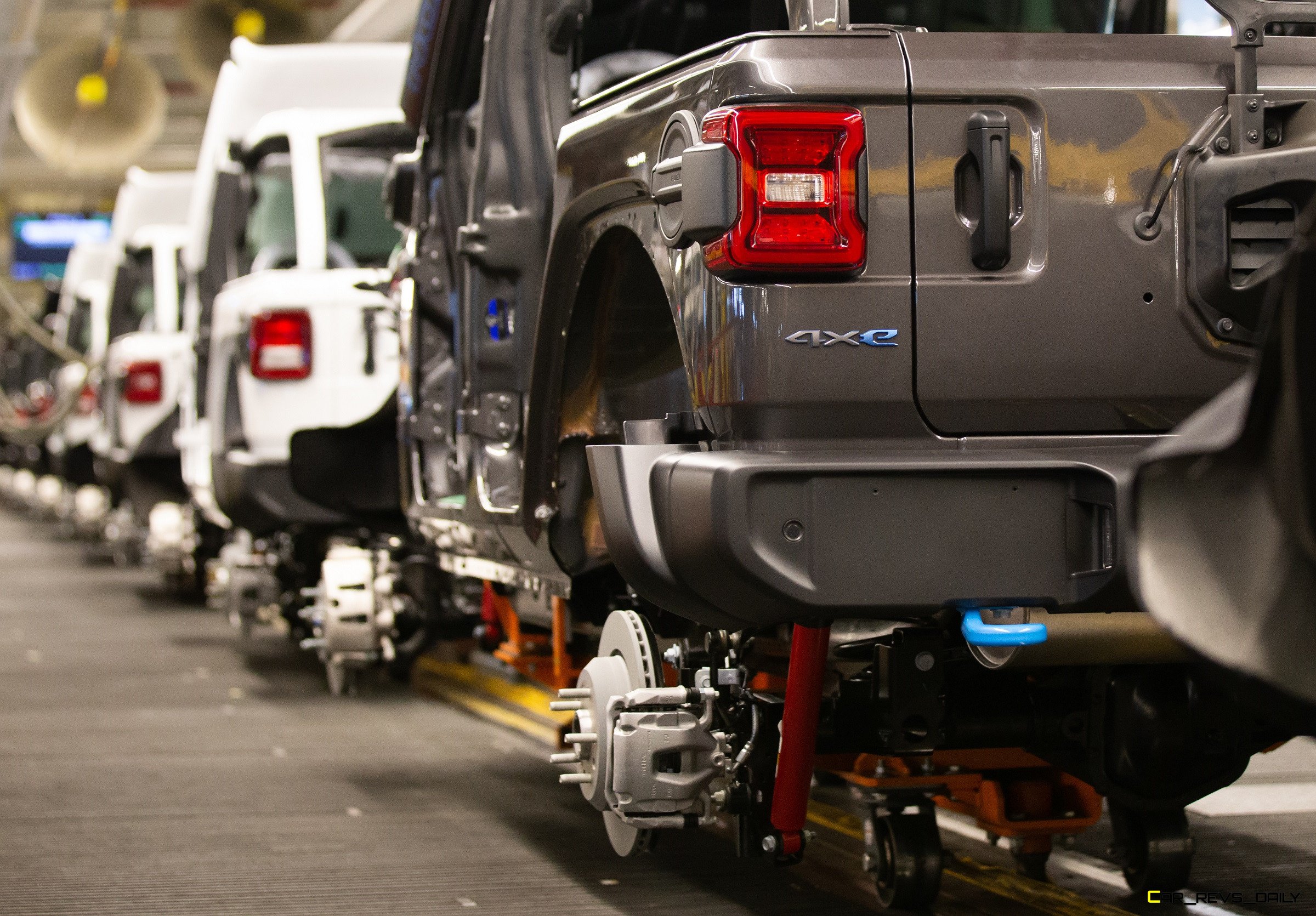Labor negotiations went down to the wire yesterday, but no agreement was reached between the United Auto Workers Union- UAW and the Detroit Big Three. The union responded by beginning a historic strike that’s not targeting just one company but all three (GM, Ford, and Stellantis) simultaneously.
UAW Strike Halts Production Of Key Models
Unlike strikes of the past where the union would typically picket one company, this “Stand Up Strike,” as the UAW calls it, will be targeting all three companies, but reps revealed that the union will also embark on a calculated strategy where select plants will be targeted first in an attempt to apply pressure to the auto companies. The first three plants targeted are Ford’s Wayne, Michigan, assembly plant (where the Ford Bronco is made), GM’s Wentzville, Missouri plant (Chevrolet Colorado, GMC Canyon, and the Savanna/Express Cargo vans), and the Toledo Jeep Assembly plant in Ohio, where the Jeep Wrangler/Gladiator is made.
Out of these three, the strike at the Jeep assembly plant is emerging as one that will be a crucial pawn in the UAW’s broader strategy. This plant makes two of the most popular vehicles that Jeep sells, and a strike at this plant will put a big squeeze on Stellantis’s bottom line and perhaps delay the rollout of the 2024 models to showrooms. The Bronco plant in Wayne, Michigan, is also another big target early on due to the Bronco becoming a key figurehead vehicle for Ford, with sales of the revived off-roader surging after the company had a rough start due to early quality issues.
“This strategy will keep the companies guessing. It will give our national negotiators maximum leverage and flexibility in bargaining. And if we need to go all out, we will. Everything is on the table,” stated UAW President Shawn Fein during a live stream on Facebook to UAW members. “No matter what, all of us need to keep organizing: Rallies, protests, red shirt days. We must show the companies you are ready to join and stand up and fight on a moment’s notice.
How Did We Get Here?

This week’s historic strike was the end result of failed negotiations between the UAW and the Detroit Big Three over four-year contracts, which are designed not only to help protect workers but also pass on benefits to them as well. The last approved four-year contract was during the midst of the Great Recession, and it saw the UAW provide a number of concessions to the automakers to help them avoid bankruptcy. They included the creation of a tier system for career advancement, reduced pay raises, and other items. This four-year period also saw the automakers generate record profits despite the speed bump that the COVID-19 pandemic produced in 2020.
The UAW and the automakers have been negotiating the terms of a new contract since last summer. However, as the deadline approached, talks between both sides broke down, and little progress was made despite last-minute offers by the Big Three to implement a 20 percent pay raise. GM and Stellantis issued separate releases minutes after the strike began. “We are disappointed by the UAW leadership’s actions, despite the unprecedented economic package GM put on the table, including historic wage increases and manufacturing commitments,” GM revealed in a statement. Stellantis followed suit saying “We are extremely disappointed in the UAW leadership’s refusal to engage in a responsible manner to reach a fair agreement the best interest of our employees, their families, and our customers.”
What’s Next For UAW Workers and The Companies?
For now, the strike is projected to extend into the weekend, and employees chosen to walk the picket line will receive $500 a week in strike pay and some benefits, but key ones like vision, hearing, and dental will not be covered. The sheer scope of this historic strike also pushes the contract negotiations into uncharted territory and if the strike extends into a long action, all three automakers are on the hook to lose a large slice of profits, especially if key models keep not being produced. Stellantis, for example, stated in a financial report that a week-long shutdown at the Toledo Jeep plant would trim $380 million in revenue from its overall revenue. The company, for its part, had been increasing production before this move, and the reps we spoke with say that the firm has a 90-day supply of Jeeps with similar stockpiles for other SUVs and pickups.
Lastly, while the formal battlelines are at the negotiation table and the main plants, the strike (especially a long one) will cause a ripple effect and inflict economic damage to other industries, including suppliers and smaller firms that will be forced to layoff workers to make up for the dip in demand from the Detroit Big Three. These layoffs will tighten the belts of more families, and it comes at a time when the U.S. is still grappling with record-high inflation.

Carl Malek has been an automotive journalist for over 10 years. First starting out as a freelance photographer before making the transition to writing during college, his work has appeared on numerous automotive forums as well as websites such as Autoshopper.com.
Carl is also a big fan of British vehicles with the bulk of his devotion going to the Morgan Motor Company as well as offerings from Lotus, MG, and Caterham. When he is not writing about automobiles, Carl enjoys spending time with his family and friends in the Metro Detroit area, as well as spending time with his adorable pets.



